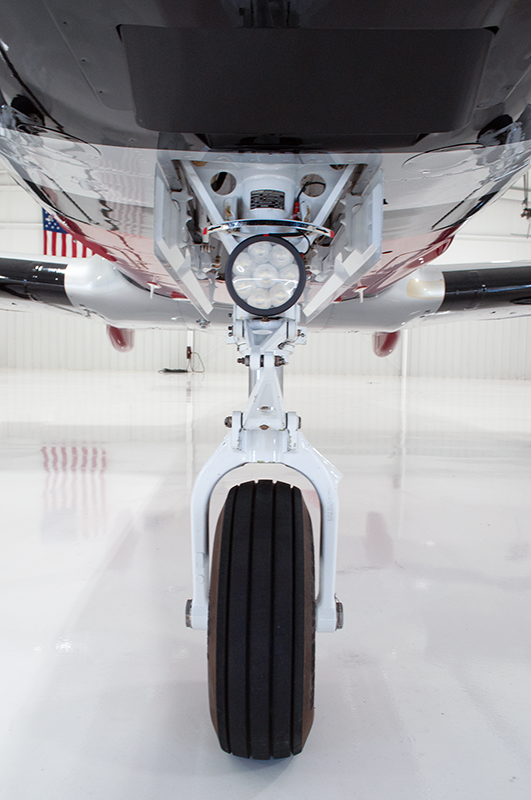
When it comes to business aviation, the Pilatus PC-12 is a popular choice for its versatility, performance, and comfort. However, some potential owners may be concerned about the safety of single-engine aircraft. So, is the PC-12 safe? The short answer is, yes—statistically the PC-12 is as safe or safer than any other turbine powered business aircraft.
PC-12 Safety Record
The PC-12 has a remarkable safety record. Since its introduction in 1994, there have been over 2,000 PC-12s delivered worldwide; and they have accumulated over seven million flight hours. In that time, there have been only 19 fatal accidents involving the PC-12, resulting in 104 fatalities. This gives the PC-12 an accident rate of 0.27 per million flight hours, significantly lower than the accident rate for all single-engine turboprop aircraft (1.15 per million flight hours). Interesting to note, none of these fatalities were caused by engine failure. Many people believe that two engines are safer than one. Well, when you really look closer, you’ll find that is not the case. The joke within the industry amongst pilots is “The second engine takes you to the crash.” And, in many accident reports, the loss of one engine does result in a loss of aircraft control (hence the second engine ‘taking you to the crash site’). BUT, the real reason (statistically)an aircraft crashes is poor pilots. Yes, about 90% of the time when an airplane crashes, it’s the person pushing the buttons! So when walk through the door to board your next commercial airliner, look to the left into the cockpit and tell yourself, “If we go down, it’s one of you takingus there.” Morbid thoughts, but again, statistically true.
Factors Affecting Safety
Several factors contribute to the PC-12’s impressive safety record.
- Reliable Engine: The PC-12 is powered by a Pratt & Whitney PT6A turboprop engine, which is known for its reliability and durability. The PT6A has a mean time between failures (MTBF) of over 10,000 hours, which is significantly higher than the MTBF of many other turboprop engines. We often find ourselves walking around an aircraft explaining the system redundancies for all the flight critical components.
- Redundant Systems and Advanced Avionics: The PC-12 is equipped with state-of-the-art avionics, which help to reduce the risk of pilot error and pilot work load (many system functions are done automatically). The aircraft is also equipped with backup systems for everything that is flight critical (redundancy), adding another layer of safety to the equation.
While the PC-12 is a safe aircraft, it is important to remember that pilot experience and weather conditions play a large role in safety. Most of the fatal accidents involving the PC-12 have occurred in instrument meteorological conditions (IMC) or at night. This suggests that pilots who are not properly trained to fly in IMC or at night may be at an increased risk of an accident.
Additional Considerations
In addition to the factors discussed above, there are a few other things to consider when evaluating the safety of the PC-12:
- Maintenance: The PC-12, like any aircraft, must be properly maintained in order to remain safe. It is important to choose an experienced and reputable maintenance provider.
- Pilot Proficiency: Pilots should stay up to date on their training and proficiency requirements. This includes regular recurrent training and participation in safety seminars.
- Passenger Safety: Pilots should ensure that passengers are properly briefed on safety procedures and that they are wearing seatbelts at all times.
In conclusion, the Pilatus PC-12 is a safe aircraft with a remarkable safety record. However, it is important for pilots to be properly trained and to be aware of the risks associated with flying in IMC or at night.
Final Thought
We can tell you things like, “You’re safer in this aircraft than you are driving your car home from work tonight.” But your real validation should come from the last 25 years. Look at the amount of aircraft and market share that the aircraft has garnered since 1995. Additionally, the PC-12 has been highly evaluated and embraced by various organizations such as Royal Canadian Mounted Police, Royal Flying Doctors in Australia, and the United States AirForce, where safety is of utmost importance. Its ability to access smaller airports and remote locations, combined with its safety features, makes it a trusted choice for critical missions. Most recently, Air Ambulance operations have flourished with the PC-12 platform. Capturing the benefits of the large cargo door for patient loading/unloading, cabin size, safety, and economics or operating.
Regarding using the PC-12 for business aviation….at the beginning of the PC-12 program, if I showed the airplane to 10 people, nine of them were also pilots. Today that statistic is completely inverted—eight or nine of the people that buy the aircraft sit in the back. The aircraft has finally been validated in spades by the CEO’s of the world! Safety is always a factor in the decision, and those CEOs and Business Owners have certainly done their due diligence and let their investments speak for themselves.
In conclusion, the Pilatus PC-12 is a safe aircraft with a remarkable safety record, especially when operated by properly trained and experienced pilots. By following safety guidelines and being aware of the risks associated with flying in certain conditions, pilots can help to ensure the safety of themselves and passengers. Come see for yourself. We’d be happy to host a one-day seminar on the PC-12, name the day and time!
Sources:
- Aviation Safety Network: https://aviation-safety.net/wikibase/type/PC12
- Pilatus Aircraft Ltd: https://aviation-safety.net/wikibase/type/PC12
- Air Facts Journal: https://aviation-safety.net/wikibase/type/PC12
- NTSB Database: https://www.ntsb.gov/Pages/home.aspx
- FAA Registry: https://registry.faa.gov/
- Pilatus PC-12 Pilot Operating Handbook: https://www.pilatus-aircraft.com/data/tech_pub/63f8bc9989683936010562.pdf
